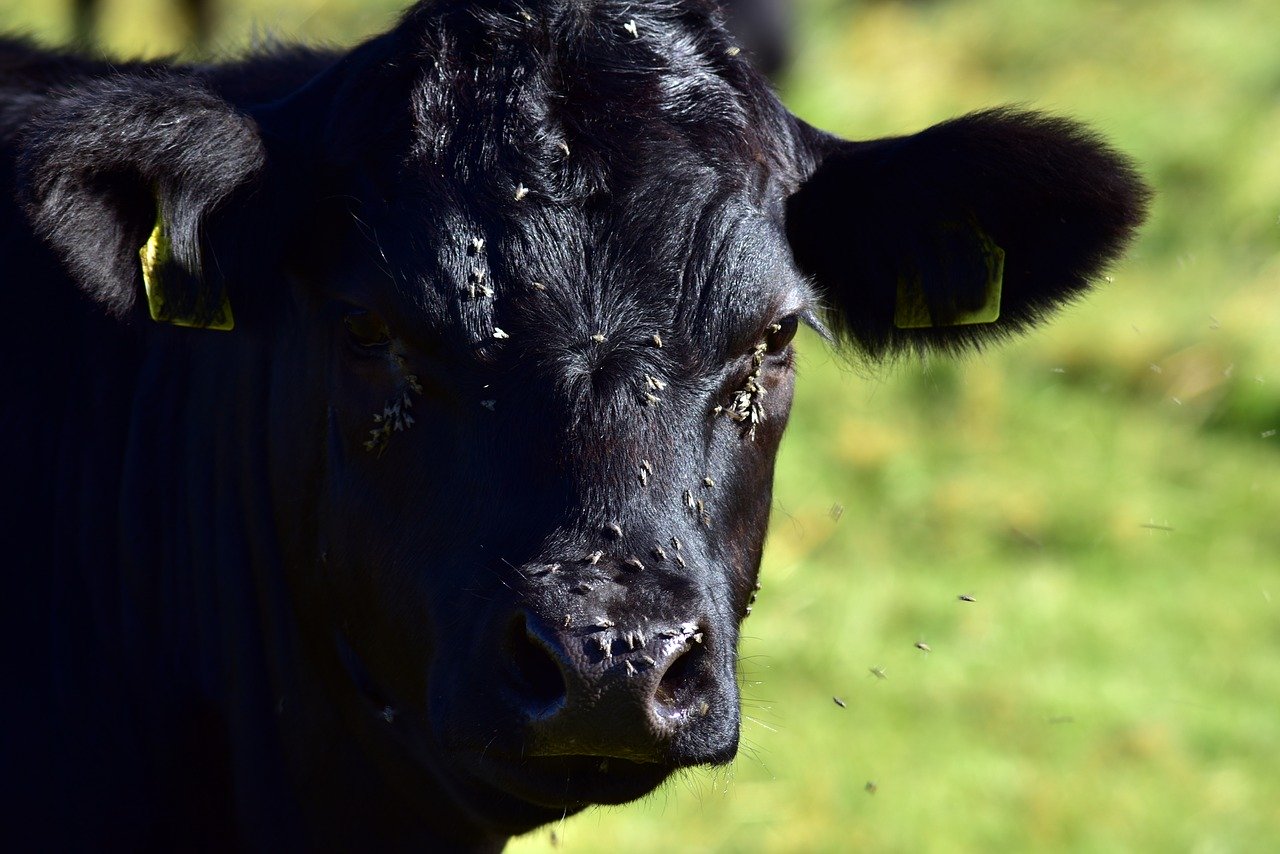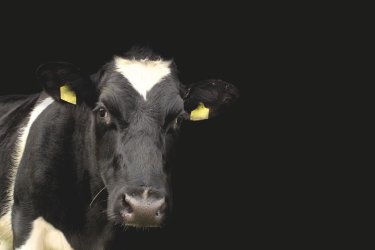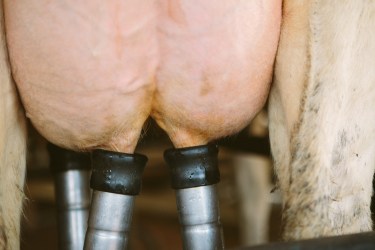Grass growth is in full swing and temperatures are lush, this means one thing – fly season is upon us. Livestock hate flies just as much as we do, if not more. Irritation and distraction caused by swarms of flies can affect feed intakes, leading to poorer growth rates in youngstock and lower milk yields in lactating animals.
Aside from being a nuisance, flies are implicated in a range of production-limiting diseases in cattle, most notably infectious bovine keratoconjunctivitis (pink-eye) and summer mastitis. Not only can these conditions be extremely painful and therefore a welfare concern, they can be frustrating to treat and often a large number of animals can be affected within a group.
As always, prevention is better than cure, and while there are several different approaches available for fly control, having knowledge of the risk factors on your farm will help you devise the optimal method of control.
Of key importance is getting ahead of the flies. If reproduction can be limited or halted early in the season, it will help prevent the hoards of flies seen later on in the summer. Be proactive in your approach before they overpopulate – otherwise it’s too late and you’ll be fighting an uphill battle. Flies begin breeding at the end of spring, so now is a perfect time to make your battle plan.
With multiple methods of elimination out there, how do you know which is best for you. We appreciate your frustration, flies are smart. They reproduce quickly and over the years this has allowed them to adapt to most environmental conditions. Sadly, a one method approach isn’t going to work. You need multiple tricks up your sleeve to get these clever sods.
Fly control
There are several methods that can aid in control:
- Use teat sealant on all dry cows to minimise the risk of summer mastitis.
- If summer mastitis is common in heifers at grass, consider applying external teat sealants, but be aware that they need to be reapplied approximately every 7-10 days.
- Avoid grazing cattle in fields with large numbers of trees, or if possible, fence those areas off; ensure that feed troughs are sited away from trees and bushes.
- If cashflow allows, fans are a simple and effective way of keeping fly numbers at bay in cattle sheds.
- Pour-on products contain permethrin or deltamethrin, and will usually kill flies on contact. However, as they need to physically touch the animal to work, you can still get some problems with tail-swishing and irritation, although it is considerably milder. Most of these products have a zero milk withhold and can be used both during pregnancy and lactation. However, be aware that they will need to be applied 3-4 times through the summer and sometimes they don’t protect the udder as well as expected.
- Permethrin-impregnated tags can seem expensive to buy but will protect animals for the season. The drug distributes along the hair to the face and can be transferred to the back through grooming. However, as with pour-ons, the udder may not be fully protected.
- Sprays – insecticidal sprays can be used to target specific areas of the animal but does need to be reapplied every 2-3 weeks through the season. It should also be noted that many of them are not water-resistant so should not be applied in wet weather.
- Stockholm tar – an old-fashioned remedy but can be effective if applied to the insides of the back legs or around the udder (particularly in beef cattle). It should not be used in lactating animals.
- Fly parasites – These can be very effective but often the most benefit is seen in the second year. This is an ideal solution for intensively housed cattle and parlours. Speak to your vet to see if this is an option for you. The parasitic flies don’t survive very well in cold weather, so they will need to be reintroduced annually but over time, the number of parasitic flies required usually reduces significantly.
- A simple pipe with holes punctured along it can be placed across the entrances and exits to the parlour. Run water through it to minimise the number of flies that enter during milking time. Water sprayers can also be placed strategically in the shed for similar effects.
- Cow brushes with insecticide applicator – most cows will use brushes, so it can be an effective and simple option. However, doses of insecticide administered can be highly variable which may promote resistance. Additionally, legs and udders will not be covered, so they may still be prone to stable flies and mastitis.
Many products exist, we are happy to sit down with you and develop a plan to control flies in your herd. The chances of complete fly elimination is slim but you can reduce the negative impact they have on your herd.







